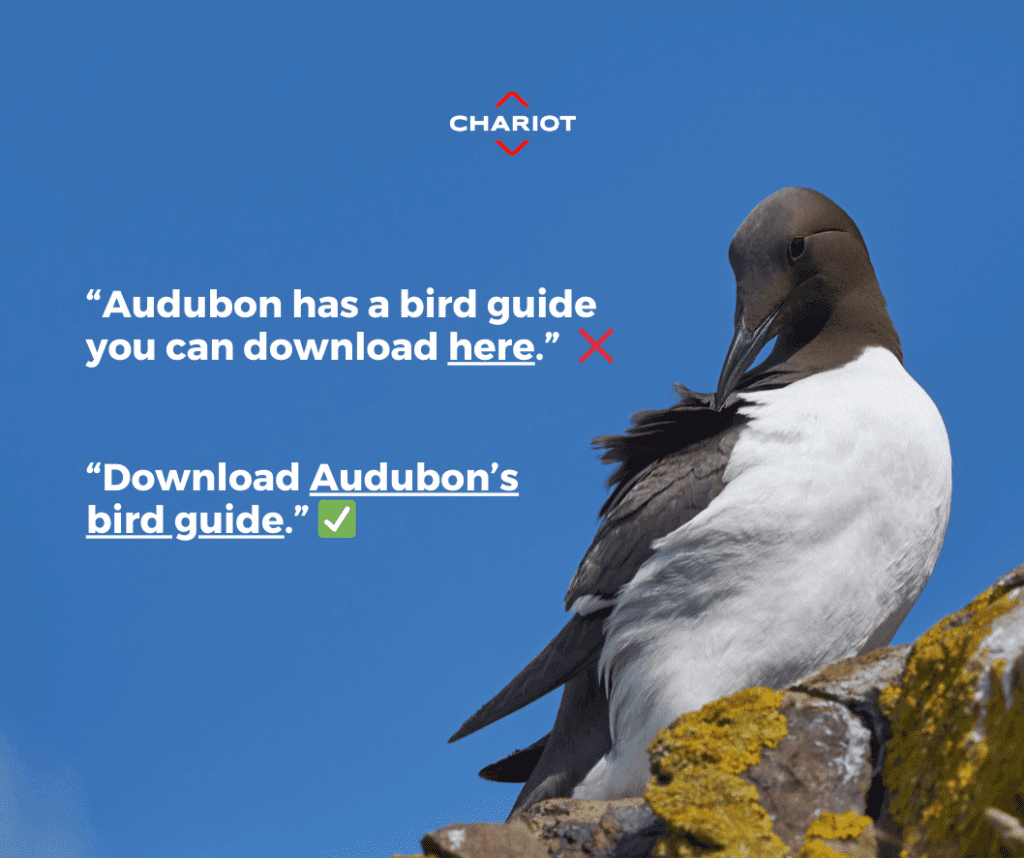Anchor text, the clickable text within a hyperlink, serves as a descriptive label offering users and search engines a preview of the linked content. It acts as a roadmap, directing both users and search engine crawlers towards a contextual understanding of the linked page.
Google acknowledges the importance of anchor text, viewing it as a pivotal signal in discerning the context and relevance of linked content. In the distant past, you could stuff “exact match” keywords in your anchor text and get rewarded for it with higher rankings, but no longer. Now, Google’s many iterations of algorithm updates demand more natural use of words that are relevant to the topic of the page you are linking to. Don’t try to game the system because the system caught up to that years ago. Search engines favor natural language content.
Anchor text comes in various forms, each with its unique purpose.
 Crafting anchor text is all about great communication. You should provide clarity through descriptive language that accurately reflects the content of the linked page while also ensuring that it’s easy to spot for users. All users. Don’t leave anyone lost at sea. 🛟 This boils down to making an effort to create a positive user experience. As for search engine optimization, Google has a guide for what it considers to be recommended/not recommended anchor text practices which we’ll also address here.
Crafting anchor text is all about great communication. You should provide clarity through descriptive language that accurately reflects the content of the linked page while also ensuring that it’s easy to spot for users. All users. Don’t leave anyone lost at sea. 🛟 This boils down to making an effort to create a positive user experience. As for search engine optimization, Google has a guide for what it considers to be recommended/not recommended anchor text practices which we’ll also address here.
Before anything else, work with your web designer and developer to create an accessible reading experience for your audience. For anchor text specifically, this means being sure that your linked text stands apart from the rest of your copy visually so that those who are vision-impaired are not excluded from reading your content. Generally, this means either going with a font or color that contrasts enough from both the background and surrounding text and/or underlining the anchor text per WCAG guidance. The point is to be sure that even someone with poor vision or who is color blind can still decipher the link with ease.
As we mentioned before, natural language is going to get you further than exact match text most of the time. The reason is that there’s a fine line between limited use of exact match words and overuse (in too many links in too many places). Crossing this line amounts to “keyword stuffing” which Google can penalize.
Further, you are talking to real people, not just search engines. If people don’t like reading your content, they’ll bounce. This is bad for you in the short term, obviously, but Google can also measure those bounces and decide that people aren’t getting what they are looking for out of your website, thus lowering your rankings.
Avoid overuse of naked URLs. These can be long and ugly as well as being less easy to read. Keep your content tidy and make the effort to leverage anchor text where possible.
Be mindful of how you use generic anchor text like “click here”. As digital marketers, we know that it makes great sense to link up a button or truncated text to say something like “learn more”. Those are sensible times to use generic text. What we’re referring to is more like this:
“Audubon has a bird guide that you can download here.”
Okay, so the reader understands the goal, but this squanders some opportunity to be more natural and hone in on key phrases while being crisp and clean. We’d write this instead:
“Audubon has a bird guide you can download.”
Or even better if you can employ a command or active voice (but that’s a whole other copywriting topic):
“Download Audubon’s bird guide.”
Don’t forget you’re writing for humans, first and foremost. Humans just want to easily understand what’s in front of them and find it helpful. Be concise, keep it clean, reap the benefits.